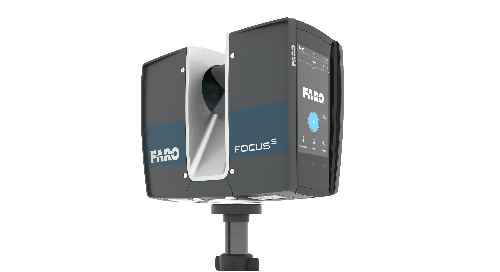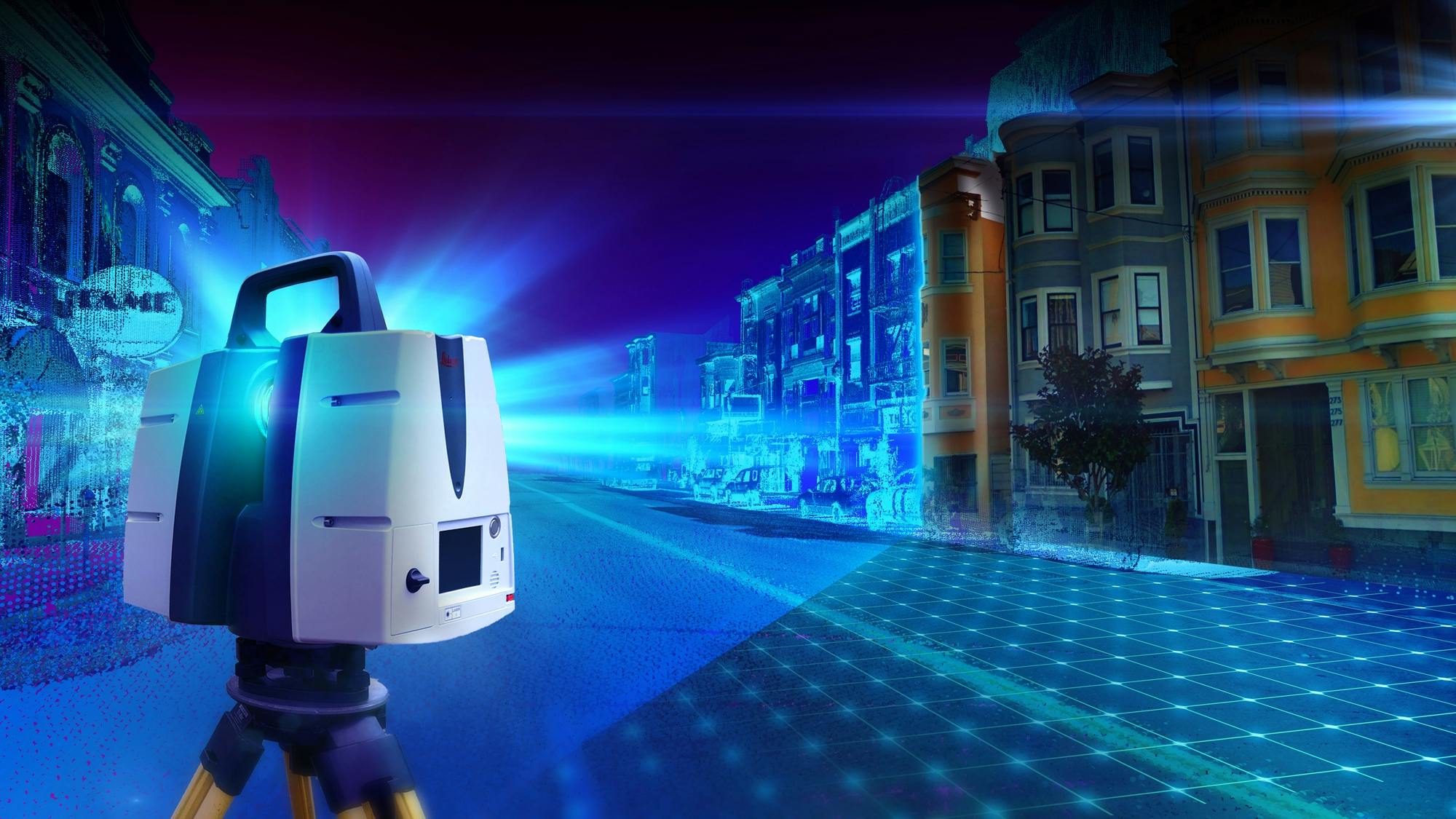Exploring the Applications of 3D Laser Scanning in Archaeology and Cultural Heritage Conservation
The assimilation of 3D laser scanning innovation in archaeology and social heritage conservation marks a considerable improvement in how historical sites and artefacts are documented and evaluated. This non-invasive approach gives precise spatial data, exposing elaborate details that were formerly difficult to record. As the applications of this innovation remain to advance, different effects for paperwork, education and learning, and conservation arise, welcoming further exploration right into its transformative influence on the area.
Understanding 3D Laser Scanning Technology
3D laser scanning modern technology has changed the area of archaeology by giving detailed and specific spatial information. This sophisticated modern technology utilizes laser light beams to catch millions of data factors from a things or site, creating an extremely accurate three-dimensional representation (3D Scanning). The resulting factor clouds can reveal detailed information of historical sites, structures, and artifacts that could be unseen to the naked eye
Using this modern technology, archaeologists can record the precise measurements, forms, and settings of things with extraordinary accuracy. This technique minimizes the danger of human error and removes the need for comprehensive hands-on measurements. Furthermore, the information collected can be assessed and shared easily, helping with cooperation among researchers. By incorporating 3D laser scanning with GIS and various other digital devices, archaeologists boost their capacity to picture and interpret historical contexts, leading to much deeper insights right into ancient societies and settings.
Enhancing Historical Documentation
3D laser scanning significantly boosts historical paperwork with its ability to produce exact site maps. This technology facilitates detailed artifact evaluation, giving understandings that typical approaches might neglect. Additionally, it ensures the conservation of contextual information, which is vital for comprehending the partnerships within historical sites.
Precise Website Mapping
While standard mapping methods frequently deal with recording the detailed details of historical sites, progressed laser scanning innovation provides an innovative approach to exact website mapping. This technique makes it possible for archaeologists to develop very detailed and accurate three-dimensional depictions of sites, showcasing topographical variants and architectural functions with amazing fidelity. The capacity to catch numerous data points in a matter of mins enables complete paperwork, which can be quickly upgraded and shared among researchers. Additionally, laser scanning facilitates the dimension of complicated geometries that would be challenging to evaluate utilizing conventional tools. Because of this, this modern technology improves the accuracy of website maps, adding significantly to the conservation and understanding of social heritage resources.
Comprehensive Artefact Analysis
Laser scanning innovation significantly enhances the evaluation of historical artifacts, giving researchers with unmatched information and accuracy. This approach catches elaborate surface textures, dimensions, and includes that standard documents methods might neglect. By generating high-resolution 3D designs, scholars can closely check out artefacts without the risk of damage inherent in physical handling. This precision permits for better relative research studies, allowing professionals to identify manufacturing techniques, stylistic variations, and potential social relevance. Additionally, the capacity to manipulate and picture data in 3 dimensions helps with a deeper understanding of artefact functionality and usage. In general, laser scanning promotes an extra thorough technique to historical paperwork, making certain that essential info regarding artifacts is maintained for future study and education and learning.
Preservation of Contextual Data
Preserving contextual information is important for enhancing historical documents, as it guarantees that findings are recognized within their initial environmental and social structures. 3D laser scanning technology significantly adds to this preservation effort by recording comprehensive spatial relationships amongst artifacts, structures, and their environments. By producing precise 3D versions, archaeologists can document the exact locations and orientations of objects sitting, facilitating a detailed understanding of their context. This technology enables researchers to review and assess sites long after excavation, keeping the honesty of contextual info. Additionally, electronic documents created via scanning can be shared around the world, promoting joint study and public engagement. Inevitably, protecting contextual information with 3D laser scanning enriches archaeological stories and promotes a more profound gratitude of cultural heritage.
Preservation of Cultural Heritage Sites
As improvements in modern technology continue to evolve, the conservation of social heritage websites has actually ended up being increasingly reliant on ingenious techniques such as 3D laser scanning. This innovation enables the comprehensive documentation of landscapes, artifacts, and structures, catching their accurate measurements and spatial relationships in a non-invasive manner. By creating high-resolution 3D versions, researchers can assess and keep an eye on degeneration patterns, making it possible for proactive conservation methods.
In addition, 3D laser scanning helps with the sharing of detailed website data with the global area, promoting cooperation among archaeologists, chroniclers, and preservationists. These designs work as indispensable resources for education and learning and public involvement, raising awareness of cultural heritage concerns. Moreover, the electronic records created can guard versus loss because of environmental variables, criminal damage, or neglect. Generally, 3D laser scanning represents a transformative strategy to the conservation of cultural heritage, ensuring that these websites can be researched and valued by future generations.

Restoration and Repair Initiatives
The in-depth documents accomplished through 3D laser scanning plays a considerable function in restoration and repair initiatives within archaeology. This technology gives precise dimensions and high-resolution images, permitting exact electronic designs of frameworks and artifacts. These models offer as crucial referrals throughout restoration processes, enabling excavators to visualize the initial layout and make informed decisions concerning methods and materials needed for repair work.
3D laser scanning promotes the restoration of damaged or shed components by developing in-depth reproductions. This process help in making certain that repairs preserve historic stability while also allowing for cutting-edge methods to bring back websites. The capability to evaluate wear patterns and structural weak points with scanned information improves understanding of a website's historical context and its use gradually. 3D laser scanning not just maintains the physical elements of cultural heritage but likewise enhances the narrative of background, leading future repair ventures.
Educational and Research Opportunities
The assimilation of 3D laser scanning in archaeology opens considerable academic and research opportunities. Academic collaborations can boost the understanding of ancient sites, while specialized training workshops furnish experts with essential skills for utilizing this modern technology. With each other, these you could try this out campaigns cultivate a richer engagement with historical techniques and methodologies.
Academic Collaborations in Archaeology
Collective initiatives in archaeology have ended up being progressively crucial for advancing both instructional and research study possibilities. By fostering collaborations among universities, study establishments, and social heritage companies, these partnerships assist in the exchange of knowledge and sources, enhancing the top quality of historical research studies. Joint tasks typically take advantage of varied competence, permitting for thorough analyses and innovative methods, especially in the application of technologies like 3D laser scanning. Such collaborations additionally look at this web-site promote interdisciplinary methods, engaging fields such as background, preservation, and geography science. Furthermore, scholastic partnerships often bring about the growth of brand-new curricula and training programs, preparing the next generation of archaeologists to properly utilize sophisticated technologies in their work. Eventually, these partnerships add to the conservation and understanding of social heritage.
Training Workshops for Professionals
Educating workshops for specialists in archaeology are increasingly essential for improving skills in the application of innovative modern technologies such as 3D laser scanning. These workshops offer individuals with hands-on experience in using innovative tools and software application, cultivating a much deeper understanding of data capture and evaluation processes. Specialists can find out to produce accurate digital designs of historical sites, which noticeably help in documentation and conservation initiatives. Additionally, these training sessions often include discussions on ideal practices and situation research studies, advertising knowledge exchange among individuals. By buying constant education, specialists can stay updated on evolving modern technologies, inevitably boosting the performance of their research and cultural heritage preservation efforts. This commitment to skill enhancement is crucial for advancing the area of archaeology.
Future Patterns in 3D Laser Scanning for Archaeology
As improvements in technology remain to improve numerous areas, the future of 3D laser scanning in archaeology assures to enhance both the precision and performance of website documentation and analysis. Arising patterns suggest a growing combination of synthetic knowledge and artificial intelligence, promoting automated data processing and interpretation. This advancement will certainly permit excavators to evaluate complex datasets much more quickly, bring about faster understandings right into historic contexts.
The integration of drone technology with 3D laser scanning is likely to expand, enabling detailed airborne studies of historical sites that are difficult to access. The raising cost of scanning tools will certainly democratize gain this link access to, equipping smaller organizations and independent researchers to make use of these devices properly. Additionally, innovations in online reality and augmented reality will make it possible for immersive experiences for public engagement and education and learning, making historical searchings for much more interactive and obtainable. These patterns collectively indicate a transformative future for archaeology, improving conservation initiatives and increasing the discipline's outreach.
Frequently Asked Inquiries
How Much Does 3D Laser Scanning Devices Price?

What Are the Limitations of 3D Laser Scanning?
The limitations of 3D laser scanning consist of high prices, possible data processing difficulties, level of sensitivity to environmental problems, and trouble catching complex information in complex surfaces, which can influence the precision and completeness of scanned representations. (3D Scanning)

Can 3D Laser Scanning Be Made Use Of Underwater?
Yes, 3D laser scanning can be utilized underwater, however it requires specialized devices and methods to overcome challenges such as water distortion and restricted presence. Effective applications have actually been shown in marine archaeology and undersea studies.
For how long Does a Scanning Project Normally Take?
A scanning task usually takes anywhere from a couple of days to a number of weeks, depending on the intricacy and dimension of the area being scanned, in addition to the prep work and post-processing requirements included in the job.
Exist Certain Software Demands for Processing 3D Checks?
Yes, details software application needs for processing 3D scans include programs with the ability of managing huge point clouds, such as Autodesk ReCap, Cyclone, or MeshLab. These tools promote analysis, visualization, and combination right into various applications effectively.
The combination of 3D laser scanning innovation in archaeology and social heritage preservation notes a significant improvement in how historical websites and artifacts are recorded and analyzed. 3D laser scanning modern technology has actually changed the area of archaeology by offering detailed and precise spatial data. As improvements in technology proceed to advance, the conservation of social heritage sites has become increasingly reliant on innovative methods such as 3D laser scanning. As advancements in technology continue to reshape various areas, the future of 3D laser scanning in archaeology assures to boost both the precision and performance of website documents and analysis. The combination of drone modern technology with 3D laser scanning is most likely to increase, allowing thorough airborne surveys of archaeological websites that are difficult to gain access to.